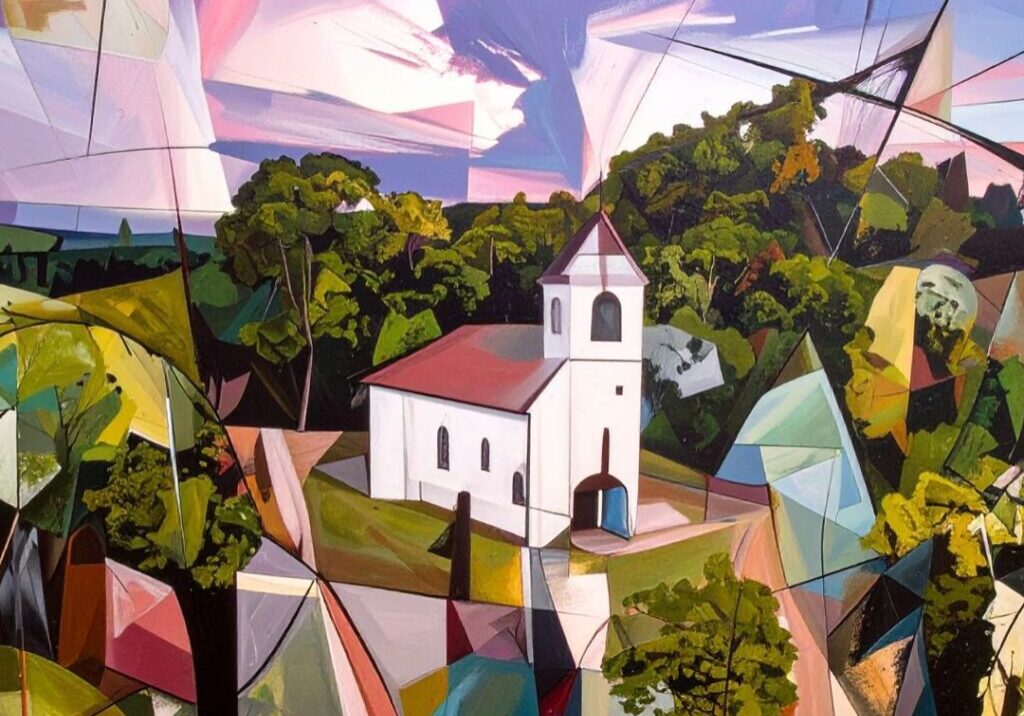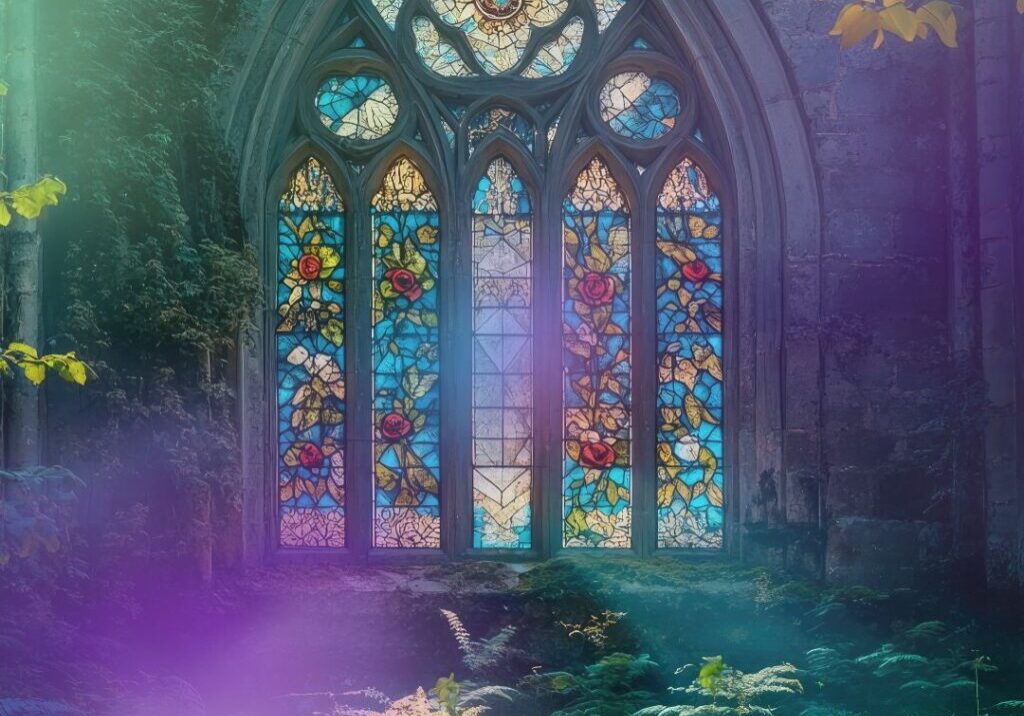Lessons for Our Time
We recently concluded our annual conference on the theme “Religion in an Age of Science,” in which all the speakers agreed that religion can no longer remain credible without the insights of science. The new cosmic story redefines religion as a temporal process, an awakening to more conscious life and deeper connectedness, thus abandoning religion as a reliance on certainty, timelessness, and eternal truths.
Shortly after the conference, an undergraduate student, a freshman, submitted his final paper for my course on “Faith, Reason, and Culture,” summarizing the main points we discussed throughout the semester. What struck me was that this young man brought the intellectual and philosophical discussions of the conference into a concrete framework of thought and action. I would like to share some of his insights here, as they illuminate the evolutionary vision of Teilhard de Chardin and our role in an evolving universe.
- Teilhard de Chardin saw the cosmos as an unfolding process in which everything is evolving toward greater complexity and unity. He called this the movement toward the Omega Point, a future of wholeness in love. He said love is the driving force behind the movement of all things.
- Understanding this process changes our sense of purpose. Instead of thinking that my goal is to find a destination, I now see I am part of something still in motion. My actions, relationships, and decisions all contribute to this ongoing story.
- I am not just living in the world; I am part of its growth. Evolution is not just a biological fact; it is also spiritual and moral.
- God is not far away or confined to some distant heaven but is right here within all things. Instead of reaching out toward something external, I am learning to pay attention to what is within and around me; my deepest self is in constant relationship with the sacred.
- God is not found in perfection but in presence, especially among those who are most excluded.
- I have stopped thinking of religion as a checklist of beliefs, and I have begun to see it as an experience of connections. God is not a distant observer but the very depth of life.
- This new sense of divine presence helps me see my responsibility to the Earth. Before, I thought of environmental care as important but mostly concerned with scientific or political matters. Reading Pope Francis’s Laudato Si’ has shown me that care for the earth is also a spiritual issue. The environment, the poor, and our hearts are all connected. If we destroy nature, we also harm the most vulnerable people and dull our own sense of wonder and responsibility. Ecology is about honoring the sacredness of all life. The Earth is not just a backdrop for human activity; it is our shared home, woven with spirit and story. Pope Francis says the Earth “cries out” under the weight of greed and neglect, and it is our task to listen and respond.
- Humanity is not something we are born into – it is something we grow into. If God is love and if being in God’s image means being able to love, then personhood is not limited to where we come from, but how we love.
- We are part of something bigger, deeper, and more mysterious than we often realize. What I know is that the world is unfinished. What I must do is participate in its healing with humility and love.
- What I may hope for is that through love and awareness, we are moving toward something better. This is not abstract to me. It means making time for silence and reflection, so I can hear myself and know myself better. It means choosing kindness even when it is hard. It means seeing value in the Earth and in each person I meet.
- Faith is no longer about being certain. It is about being open to thought and mystery.
- Reason is not about having the final answer – it is about asking better questions.
What I have come to realize is that younger generations are already primed for second axial religion. By second axial religion, I mean the search for ultimate meaning or having ultimate concern that is based on community, ecology, interconnectedness, science and technology. Older generations have been brought up on axial religion, which emphasizes individuality, autonomy, freedom, thought, and transcendence. Monotheism, and its political and social correlates, is rooted in axial religion. Axial persons think in binary relationships: God and world, eternity and time, heaven and earth, spirit and matter, saved and sinner. The word “God” points to a perfect, eternal Being who exists outside time but operates in time; a God who is related to the world but is essentially unaffected by the world. Generations born in the age of computer technology, postmodernism, and ecology, signify a new consciousness of interconnectedness, community, global consciousness, and social justice. Teilhard de Chardin was a first axial person who anticipated religion in the second axial period.
Second axial religion goes beyond first axial concerns primarily because time and space are dynamic aspects of an energetically-driven universe. We live in a universe of radical uncertainty, one which is intrinsically connected and consciously active. Physicist Lee Smolin in his book Time Reborn states that time is the most real aspect of our perception of the world. Everything that is true and real takes place in each particular moment which opens up to a succession of moments. Space is an emergent property of the universe. The future, therefore, is not totally predictable and is open to infinite possibilities.
What we have to put to rest, Smolin states, is the idea that what is bound in time is an illusion and what is timeless is real. In the first axial age, with its ancient cosmology, God dwelt above the stars and angels as Creator and sustainer of the universe. Now we must overcome the idea that anything is, or can be, timeless. We need to see everything in nature, including ourselves, our technologies and, in a particular way, God, as time-bound and part of a larger, ever-evolving system. This is what Teilhard de Chardin realized by stating the Absolute is found within matter and not apart from it, a new and vital presence of God, not a God draping the world with power, but a God integral to the world’s becoming. God and world are in the process of becoming something more together because the universe is grounded in a center of divine love. In his essay on The Heart of Matter, he wrote: “I see in the world a mysterious product of completion and fulfillment for the Absolute Being himself” (Heart of Matter, 54).
One of the greatest challenges for first axial religious believers is overcoming the timeless, eternal God of perfection and reconceiving God as a presence of unconditional love. Love is the indestructible energy of cosmic life. Once we grasp our true reality, hope looms before us. As Saint Paul wrote: “There are three things that last: faith, hope, and love, and the greatest of these is love.”
 View print-friendly version
View print-friendly version
29 Comments
Leave a Comment
Related Posts

Beyond Violence: The Path Through Grief to Spiritual Evolution
The recent shooting at Annunciation School in Minneapolis continues to haunt our collective consciousness. While the news cycle moves forward—with yet more senseless acts of political violence—the Annunication tragedy leaves…


Thank you, Steve! These words from Ilia Delia and her student concerning Teilhard
de Chardin are stunning!!! I, a retired UM Deacon of 77 years find myself in this very camp (age?) and love having such succinct thoughts to
give life to my feelings.
I will be reading more Teilhard!!!
Thank you for sharing this remarkable reflection. It’s both encouraging and humbling when a freshman distills what many of us spend decades trying to articulate—namely, that faith is not a static monument to certainty, but a living, evolving relationship with reality itself.
Teilhard de Chardin spoke of the slow burn of divine love drawing all things forward, and it seems this student has already caught fire. While some still argue over whether God resides in eternity or engages with time, this young voice cuts through with the clarity of someone who’s begun to live as if love is the structure of reality. He’s not just summarizing ideas; he’s inhabiting them.
It’s also no small irony that in an age often accused of intellectual apathy, it’s the younger generation that seems most ready for what you call “second axial religion”—a faith that is less about grasping immutable truths and more about attuning to dynamic presence, cosmic belonging, and ecological responsibility. While theologians debate God’s relation to time, this student is already scheduling time to compost, reflect, and practice kindness. One suspects Teilhard himself might be cheering from the Omega Point.
This paper reminds us that wisdom doesn’t always trickle down from the top. Sometimes it arrives, fully formed and unsettlingly articulate, in a stack of undergraduate essays—challenging us to rethink not only our theology, but the very way we listen.
as I am now living in my 80s, I see the world totally different. Thanks to people like sister deal and tell her Disha Dan, Thomas Merton, and the mini mini great faithful people who are leading the way into this new idea of religion, love and compassion.
Ilia, thank you so much for this reflection. At age 84, I am being opened more and more to the immense mystery of unconditional, all inclusive love. At the risk of sounding heretical, I am seeing the Holy as being Reality, just as it is, minute by minute. That is why I am touched by the ideal of time as being important and essential. Again, I am grateful.
Our new Pope Leo studied science at Villanova. I sincerely hope he allows the findings of science to inform our theology, rather than compartmentalizing them or favoring the old, inaccurate explanations in a way that increasingly makes certain doctrines no longer believable.
This selection from the student is EXCELLENT! What a wonderful way to summarize and emphasize the key elements of religion in the first axial age and the religion Teilhard foresaw in the coming axial age.
I’m 71 years old and I wish that others my age, ingrained as I was in checkbox religiosity, could breathe in this fresher approach to an immersive, compassionate & loving God.
I wonder what that world would look like.
I love every word of it. It is beautiful and true.
I would love to meet this young man someday! Pope Leo XIV could not have written a paper so numinous and heart-felt!
I was struck by his style and grasp of Teilhard de Chardin’s intrinsic experiences. Your student brought all of his heart and soul into his final paper on “Faith, Reason, and Culture” by his understanding and expressions in points #2, #3, and #5.
Sister Ilio, your student and friend of us all, gave me more hope, the day before Mother’s Day 2025, than the election of our new Pope! I am 73 years old and I will soon celebrate another birthday.
Peace in the Cosmic Christ,
Ilia is right in concept. On the other hand, I prefer the concept that nothing is lost. What satisfied early and medieval Christians and others of different faiths was a universe made by God. To understand the mystery that faith expressed in terms of stories, symbolic myths and theology were fundamental stages out of which advanced thinkers have evolved. That the Ultimate Mystery of Energy has personality and feelings, I think, depends somewhat on the revelation and tradition of past religious generations. The old ideas of a judging and punishing Almighty may very well be disputed and rejected as dependent on cultural histories, from which we more mature humans evolve progressively. Day by day, advanced thinkers owe it to the less advanced to guide with compassion and wisdom to distinguish between wiser and pragmatic or reactive action. Segregation was once an article of pragmatic faith. Now the wise see it as not just passe’ but out of line with the scientific, philosophical understanding that everything and everybody belongs together in common enriching unity. (This idea jibes with Jesus’s desire expressed as “that all may be one,” as he and the Father are.)
YES!
Thank you for this. Your words have educated, formed, and blessed me for some time. But reading this post, I think I have found the essence of what I mean when I say and write that we are in a time of awakening, when God is once again doing a new thing (Isaiah 43:19). Through the prophet, God asks, “Do you see it?” Your post further cleans the lens of my vision (Mark 8:18), moving me farther into a “yes”–a Divine Yes (E. Stanley Jones). Thank you.